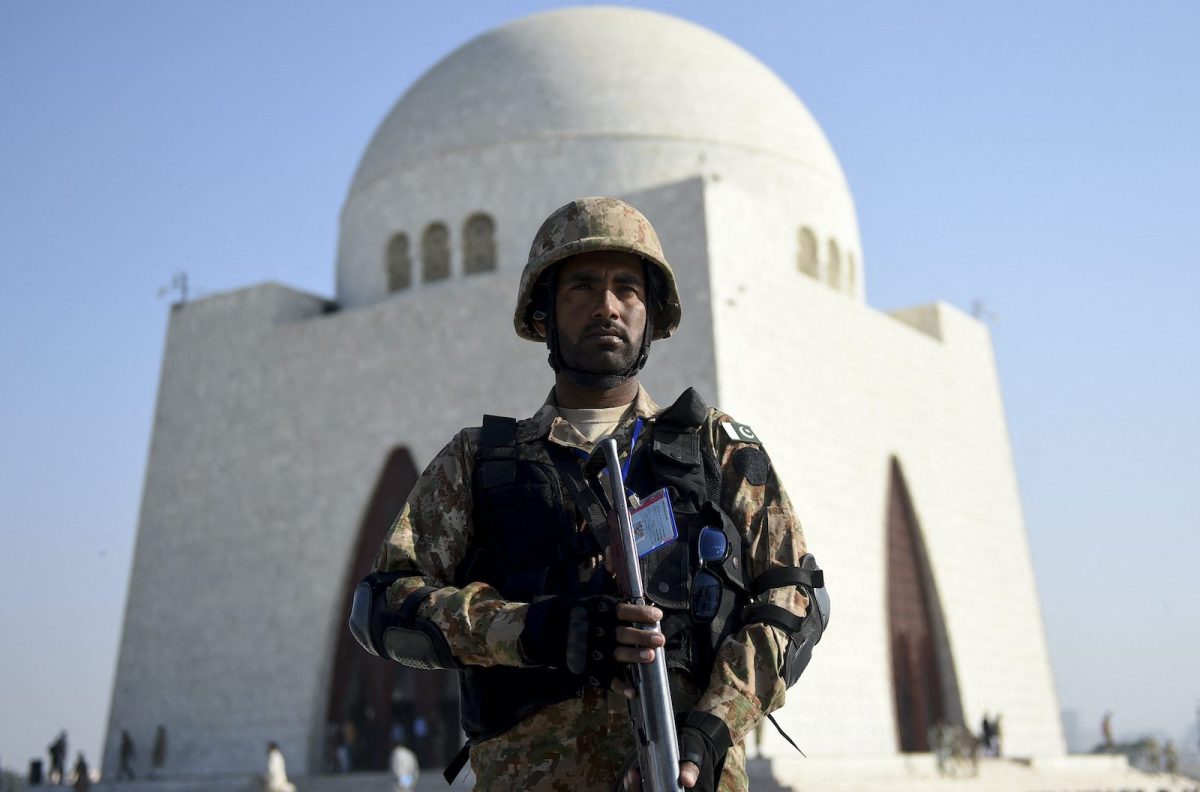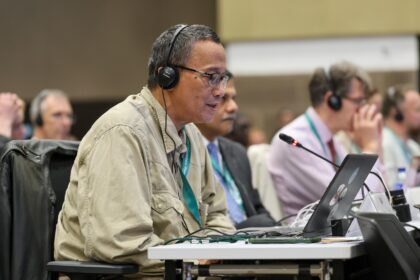[ad_1]
PESHAWAR- Pakistan has unveiled a new “geo-economic vision†that offers to “bury the past†with neighboring rival India if it reciprocates with a “relaxation†on the two sides’ long-running dispute over Kashmir.
Pakistan’s olive branch announcement, made on March 18, comes after last month’s bilateral resolution to revive an 18-year-old ceasefire agreement to end Kashmir’s Line of Control (LoC) skirmishes, which have claimed thousands of lives on both sides of the divide over the years.
By de facto offering peace with India, Pakistan appeared to turn the page on its trademark militarized rhetoric by calling for a new bilateral emphasis on “infrastructure development and regional integration†for the sub-continent.
General Qamar Javed Bajwa, Pakistan’s army chief, made the pledges while addressing the first-ever Islamabad Security Dialogue on March 18, vowing “non-intervention†in the internal affairs of neighboring and regional countries while acknowledging that unless “one’s own house is in order, nothing could be expected from the outside.â€
Bajwa, moreover, called for peaceful coexistence, non-interference, boosted intra-regional trade and connectivity, and the creation of new intra-regional investment and economic hubs as the four pillars of his geo-economic vision.
“On top of it, we spend huge money on defense which creates a paucity of funds for human development programs. That is precisely the reason that despite rising security challenges, Pakistan has resisted the temptation of an arms race in the region and over time scaled down the country’s defense expenditure,†Bajwa claimed.
India and Pakistan have fought three wars over Kashmir since British colonialists left the subcontinent. Pakistan’s de-escalation of its conflict with India, of course, is still only rhetorical.
A report published this month by the Stockholm International Peace Research Institute (Sipri) placed Pakistan among the top 10 major arms importers of the world and the biggest in Asia for the period spanning 2016-2020, accounting for 2.7% of total arms sales.
Moreover, the report revealed that Pakistan had several overdue orders for arms scheduled for delivery through 2028, including 50 combat aircraft, eight submarines and four frigates from China, and four frigates from Turkey.
But the signals emanating out of Pakistan are increasingly peaceful. Prime Minister Imran Khan said that economic prosperity was possible only in a serene regional neighborhood. “We would not take full advantage of our geostrategic location until we have regional peace and our trade relations with our neighbors restored,†he said on March 17.
The shift from a security to economics orientation will be contentious in Pakistan. A senior Pakistan Muslim League-Nawaz (PML-N) opposition leader who requested anonymity told Asia Times that General Bajwa had no constitutional right to say what he said about the nation’s future course of action vis-à -vis India.
“A soldier cannot dictate terms for a peace process, which is the job of political leadership to decide. Unfortunately, Prime Minister Khan has outsourced his responsibilities, which has disrupted the power equilibrium. That is why the army chief is overstepping his constitutional responsibilities,†he said.    Â
The opposition politician said that Bajwa’s proposed de-escalation of border tensions and shift towards a “geo-economic†strategy ultimately aimed to push ahead stalled infrastructure development projects and regional connectivity schemes now being built under China’s global Belt and Road Initiative (BRI).
The two sides are currently engaged in a $60 billion China-Pakistan Economic Corridor infrastructure development program that has recently stalled on security concerns, including in Pakistan’s restive Balochistan province. Bajwa has been a major supporter of the CPEC and is a key point person for Beijing.  Â
“Beijing’s huge investment cannot achieve its objective unless peace is returned to the region and in my view, China did play a role in bringing India and Pakistan back to the negotiation table under an 18-years old Line of Control (LoC) ceasefire agreement at a time when the situation on both sides was tense,†said the opposition politician.
The peace overtures between New Delhi and Islamabad began last month when both countries agreed on a ceasefire at the Line of Control (LoC) under an old agreement reached in 2003. A statement jointly released on February 25 revealed that the nuclear powers have agreed to follow all agreements and understandings reached since 2003 to maintain a ceasefire across the LoC.
The statement added that the Director Generals of Military Operations (DGMOs) on both sides decided to address all such mutual concerns that could create mistrust on both sides and ignite LoC violations so that the situation does not boil up on the border.
The announcement was highly unexpected, leaving analysts and observers to speculate how and why it was brokered. International media reports have suggested various behind-the-scenes motivations.
Some have speculated that the US helped to broker the deal to make Pakistan exclusively focused on the security situation in Afghanistan, which threatens to devolve into chaos and mayhem as a vowed US troop withdrawal, which may or may not happen, approaches in May. Â
Others have suggested China helped drive the deal. The China-India Himalayan standoff over contested territory in Ladakh, some speculate, pushed New Delhi to normalize with Pakistan, as Indian fears of a potential two-front armed conflict spiked in recent months.
The fact that India and Pakistan’s ceasefire announcement came just two weeks after China and India reached a similar arrangement reinforced the speculation. Beijing and New Delhi jointly announced a military disengagement in the north and south of Pangong Lake to end a nine-month stalemate at the Line of Actual Control (LAC).
“Does India think it has obtained nominal objectives so it is time to take an off-ramp?, Asfandyar Mir, a scholar at Stanford University who specializes in South Asian security affairs, asked.
“Alternatively, due to sustained Chinese pressure over the last year, Indian policymakers feel they need to pull back on the level of hostility with Pakistan? Both are plausible, but I speculate the Chinese pressure on India over the last year has been substantial and exerted more influence on India’s decision to de-escalate [with Pakistan.]
“India’s decision to re-engage is somewhat more surprising. For years, India has sought to keep the temperature on the LOC high not just for local, LOC-specific goals but also in the furtherance of India’s broader coercive strategy,†Mir said. “The strategy has been to change Pakistani policies of supporting various India-specific jihadists and separatism in Kashmir, as well as the country’s longstanding claim on Kashmir,†he added.
Pakistani officials, for their part, say there is no secret push behind the de-escalation of hostilities. The deal “will save innocent lives so no-one should question the intent nor should wrong inferences be drawn,†Moeed Yousaf, special assistant to Prime Minister Khan, wrote on Twitter.
“There is nothing more than (what) meets the eye here.â€
[ad_2]
Source link














